Dianthus In Pots – The Best Options To Grow Have Compact Growth Habits

PERENNIALS > DIANTHUS > CONTAINERS

Elizabeth is a Permaculture Garden Designer, Sustainability Consultant and Professional Writer, working as an advocate for positive change. She graduated from the University of St. Andrews with an MA in English and Philosophy and obtained a Diploma in Applied Permaculture Design from the Permaculture Association.
Reviewed By DAN ORI

Dan has over 27 years’ under his belt caring for plants and gardens. Working as a Horticultural Instructor and Consultant, he draws on a diverse range of experience that includes working as a Head Gardener, Tree Surgeon, Garden Centre Trouble Shooter, and writer of academic papers. Dan has a Level 3 Diploma in Horticulture and is currently a candidate for the RHS’s most prestigious award – The Master of Horticulture.
Contributions From EMILY CUPIT

Emily is a Gardening Writer, Photographer and Videographer from Derbyshire, UK. She is the Founder of Emily's Green Diary - a community of more than 75,000 people who share in her gardening journey.
DIANTHUS GUIDES
Container Growing
Deadheading
Growing From Seed
Propagation
Varieties
Watering
Dianthus such as Pinks and Sweet William can be excellent choices for many gardens.
Dianthus prefer a sunny and free-draining spot, ideally, usually, in alkaline or neutral soil.
They can also often be excellent options for growing in containers.
While many Dianthus species and cultivars can work very well in containers, it is important to understand that some will be better suited to growing in pots than others.
The best options are usually those which are more compact in their growth habits – such as alpine pinks, small border carnations etc.
Though even larger Dianthus may work well in containers as long as these are sturdy enough and of sufficient size.
Choosing Dianthus Containers
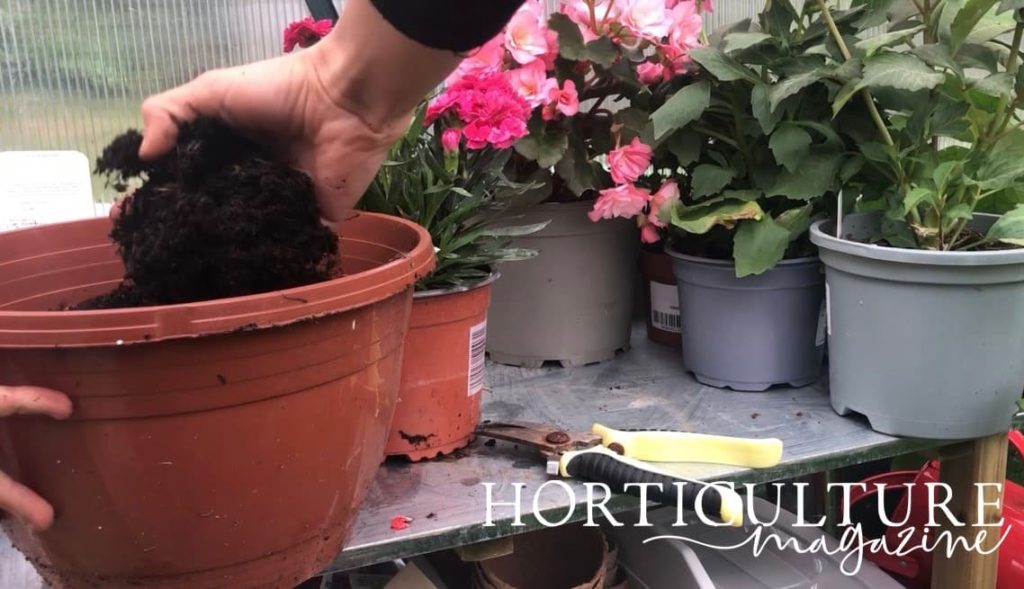
When choosing a container for a Dianthus, it is important to understand how large the cultivar or variety that you have chosen can be expected to grow.
It is also important to note, if you are planning an outside container garden, that while most Dianthus are fully hardy, there are some florist’s carnations which are perpetual flowering and grown in a greenhouse year-round.
Dianthus can differ in their growing requirements.

Most, however, require relatively free draining conditions in full sun – make sure that the container you choose allows water to drain away freely from the base.
The Dianthus should not be too constricted, but should also not be given too much room.
In too large a pot, with too much growing medium around the roots, waterlogging can become a problem.
Choosing Compost
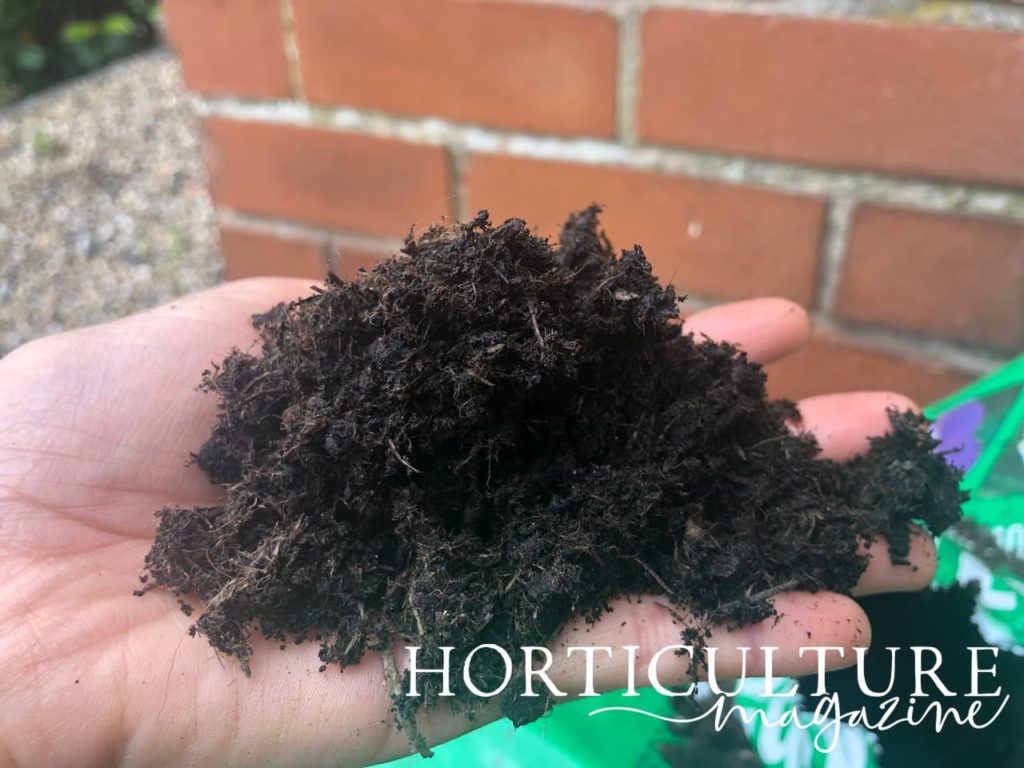
The medium that you choose to fill your containers will depend on the stage of growth of your Dianthus, and also whether you intend to keep the Dianthus in the pot only for a certain period of time before planting out into a garden, or will grow Dianthus in containers over the longer term.
Just remember that, in general, you should use a peat-free compost mix, and that mix should be free-draining.
But also, the medium should not dry out entirely. Aim to keep it just moist.
Potting Up Dianthus
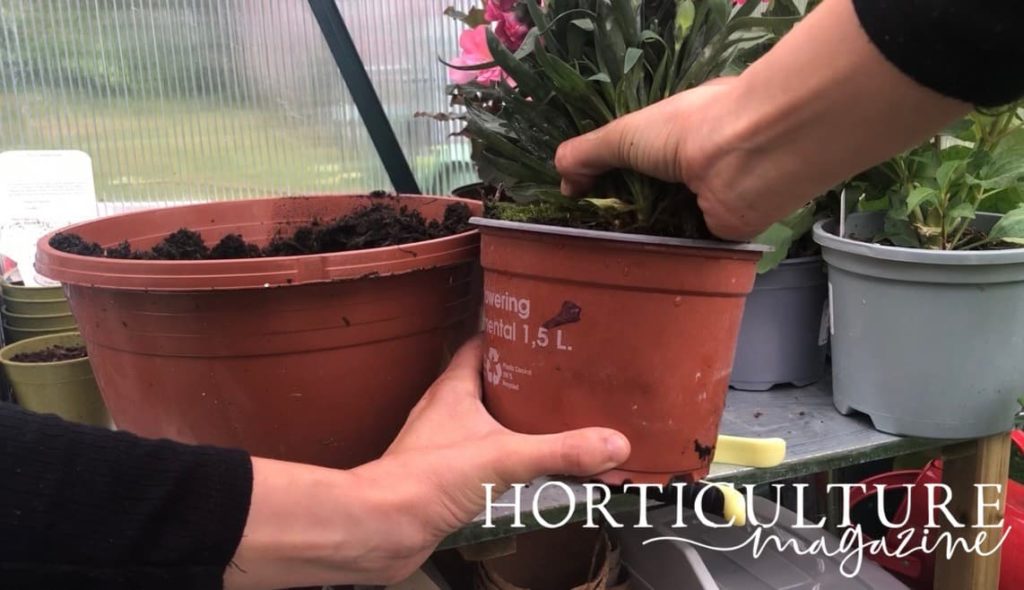
Dianthus are usually potted up or planted after risk of frost has passed, in the spring.
Though purchased plants can often be potted up throughout the summer and into early autumn too.
Remember that Dianthus that will grow outside in your garden typically do best when positioned in a site with full sun.
How Many Can You Plant Per Pot?
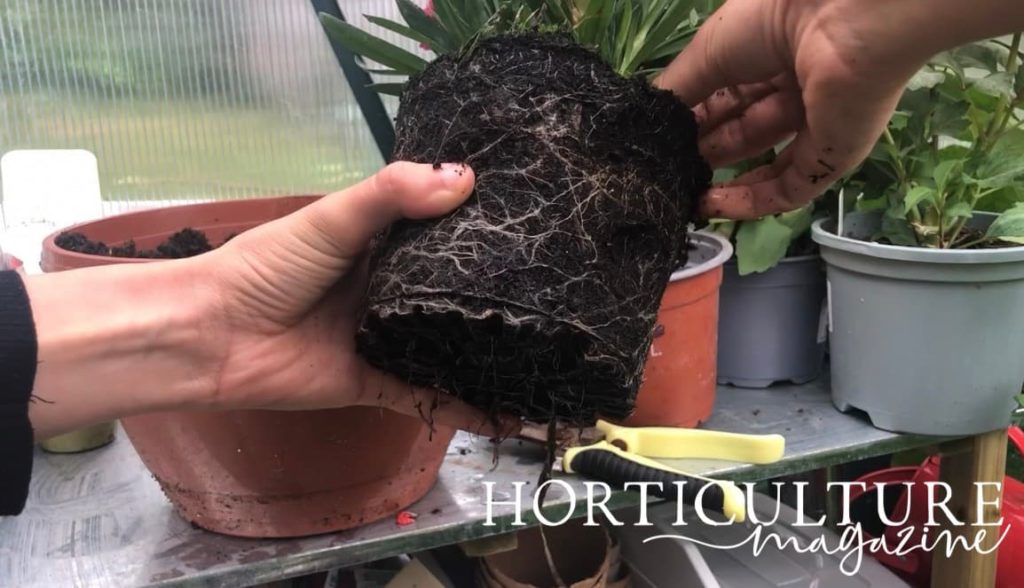
Larger Dianthus varieties may be potted up into their own individual pots, while smaller types, like alpine pinks, may well be planted with several in a larger pot, or grown in a larger container alongside other alpine plants.
You might consider growing smaller pinks alongside a range of other alpines, or, for example, perennial Salvias, lavender, hyssop and thyme, for example – all of which also like sunny and free-draining conditions.
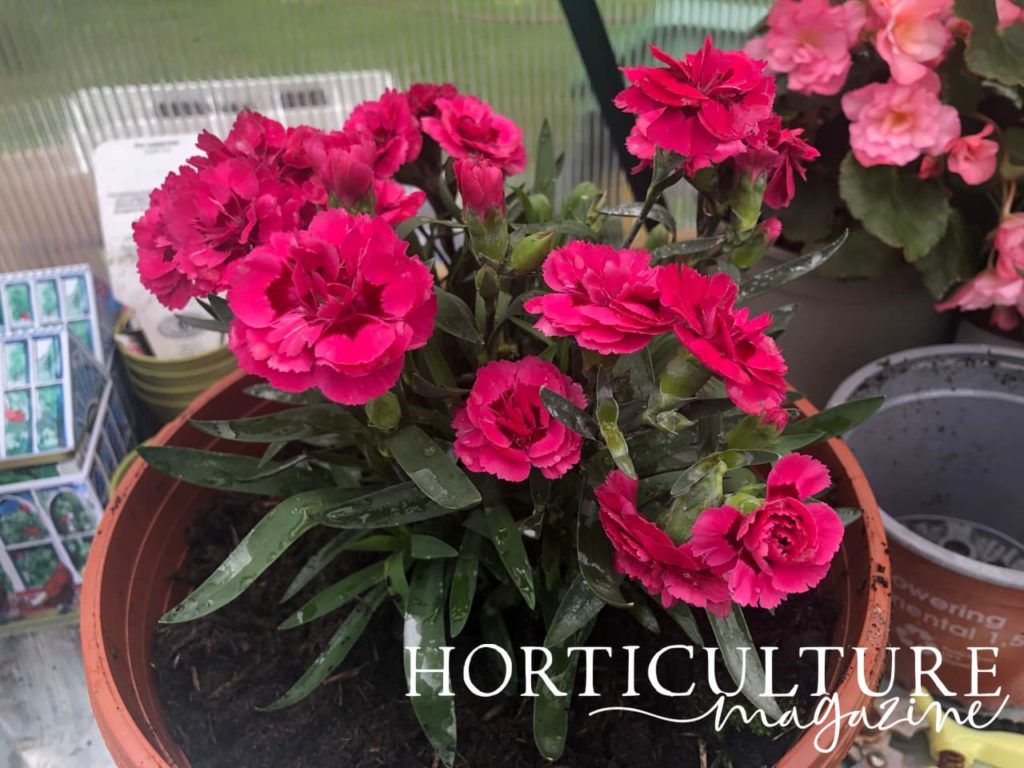
When planting up mixed containers, however, remember that Dianthus does not usually like to be too crowded with other plants.
An open and uncongested position with reasonably good airflow will see them perform at their best.
Potted Dianthus Care
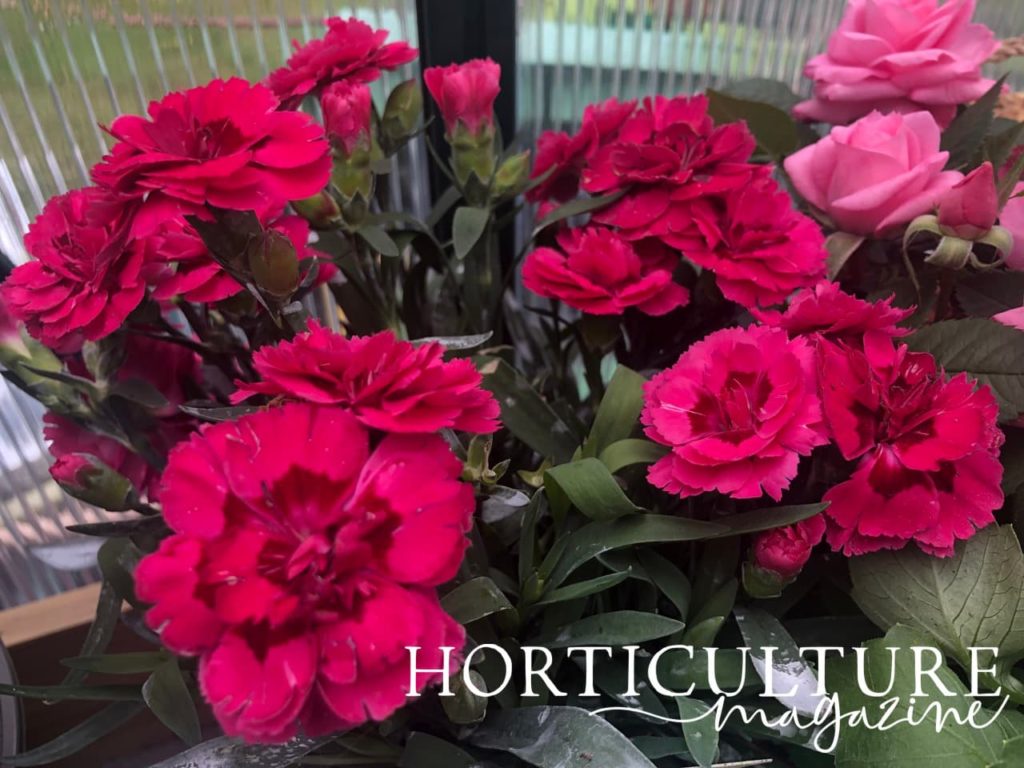
Place containers in a sunny position in your garden.
Rabbits love Dianthus so you may need to choose a location rabbits cannot reach if you have lots of these in your area.
Water moderately and take care to avoid overwatering and waterlogging.
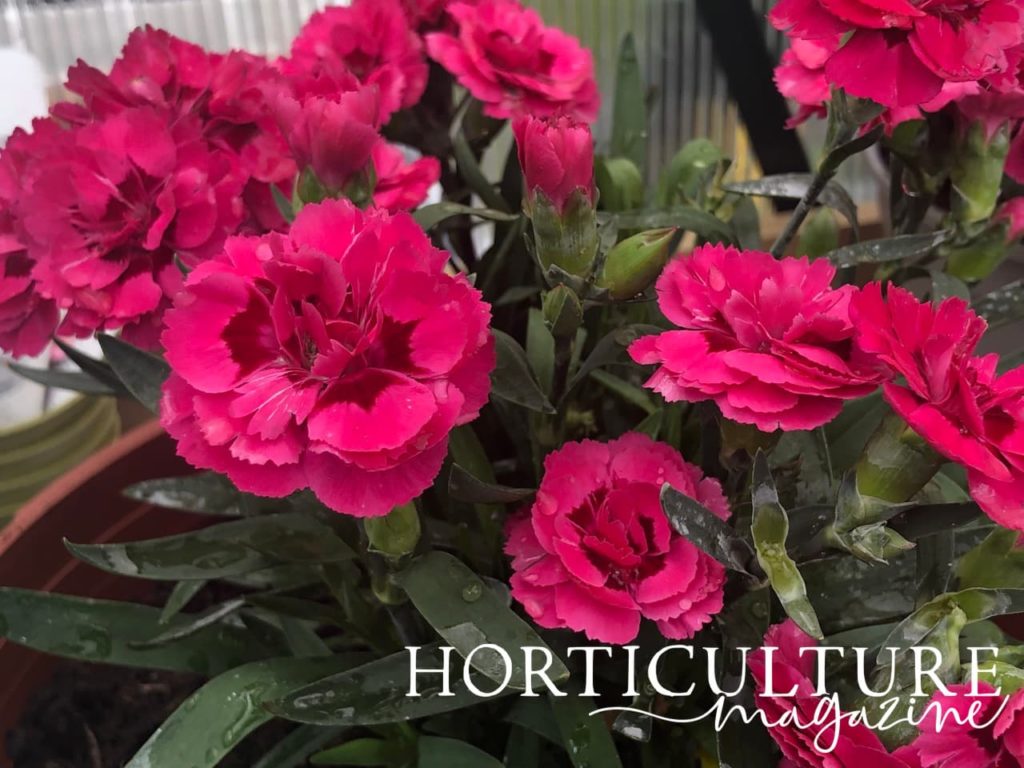
Remain vigilant for signs of pests or disease.
Dianthus are often trouble-free, but issues can occur and it is important to keep a look out and deal with any issues before they become more of a problem.
Deadhead Dianthus after the first blooms fade (often, though not always, you can obtain a second and sometimes even a third flowering from these plants).

After deadheading, feed with a potassium-rich organic liquid plant feed to encourage further flowering and keep the plants healthy.
In autumn, cut back faded blooms and remove any straggly leaves – give the plants a light trim to encourage fresh foliage growth.
If the foliage of a mature perennial Dianthus gets frost damaged in winter, cut back hard to a couple of centimetres above the medium’s surface.
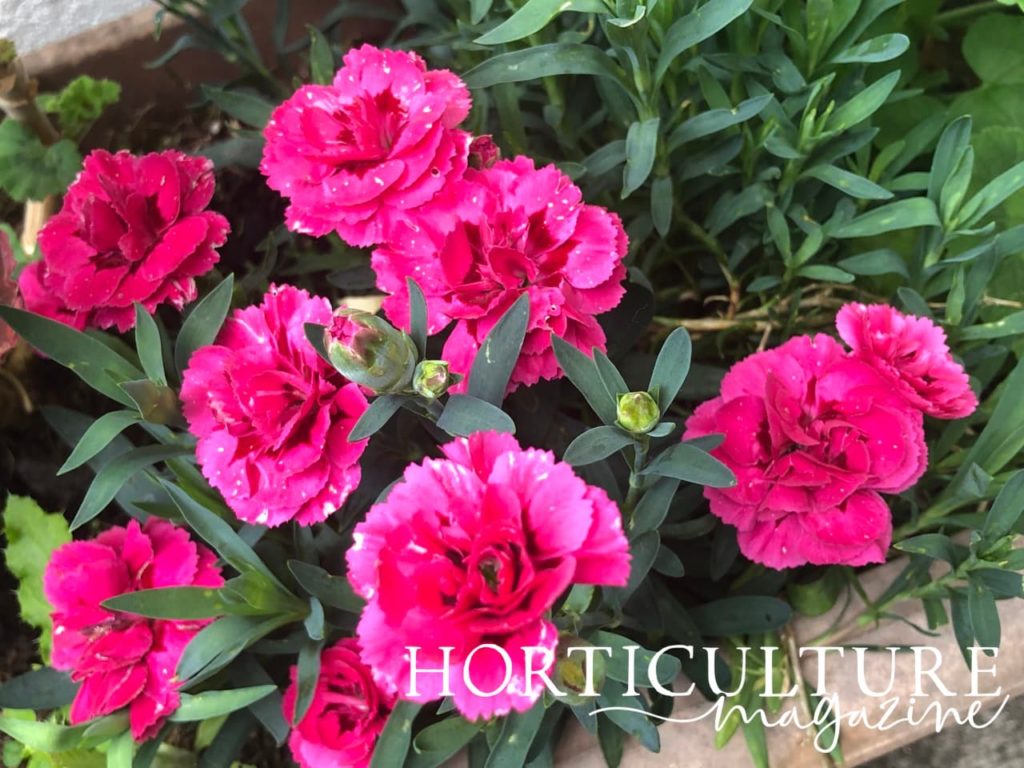
Move container-grown Dianthus to a sheltered location to protect them from winter cold and especially winter wet.
Remember that plants in pots are less insulated and more vulnerable than those in the ground.
“If I bring Dianthus into an unheated greenhouse for the winter, I like to give them a good trim to thin them out, otherwise I know I will be dealing with Botrytis (grey mould) due to the lack of airflow and the damp conditions,” says Dan Ori, a Horticultural Consultant.
